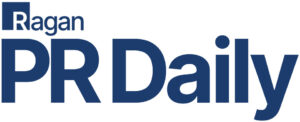How to reverse the trend of women leaving the workforce
Here’s how your organization can offer support to femaie employees–bolstering inclusion and driving business results.
The pandemic is worsening the global gender gap by a stunning margin.
While it was previously projected to take 99 years to close that gap, according to the World Economic Forum, it will now take 135 years to do so. Since early 2019, more women have lost their jobs than men, more are considering leaving the workforce or downsizing their careers, and more are disproportionately shouldering pandemic-era burdens, such as childcare responsibilities.
While the “She-cession” has generated awareness, acting now to address the setbacks is crucial. The pandemic has clarified the need for a major course correction across organizations and industries to support, recruit, retain and advance women. As advocates for diversity, equity and inclusion (DE&I), corporate leaders must ask themselves: How can we change our policies, procedures and approaches to right the wrongs that have occurred during COVID?
What can companies do now to try and turn back the losses exacerbated by the pandemic? Knowing where to start is often the first hurdle, so here are some ideas.
Use diversity data and business research to inform decisions.
Embracing change isn’t about optics. It’s about something far more fundamental – the business case for DE&I. And prioritizing women in the workforce isn’t just the right thing to do – it’s good business. The data is clear. Strong diversity is a differentiator for organizational performance and culture. Placing that message front and center in your communications is a vital step in driving change.
Many experts tout stronger DE&I as vital to a faster economic recovery in the face of the ongoing pandemic. There are also demonstrable benefits for organizations that treat DE&I as a business imperative. One way to think about the positive impact of DE&I is with the “Four Pluses of Parity”: increased innovation, higher profitability, better recruitment efforts and higher employee retention.
- Women must have a seat at the table, in good times as well as bad, for companies to innovate at a faster rate than homogenous companies. Inclusive companies with women in all their ranks are 1.7 times more likely to be innovation leaders in their market according to human-resources consultancy Bersin by Deloitte. And Boston Consulting Group found that companies with above-average diversity within their management teams have innovation revenue of 45% versus 26% for those with below-average leadership diversity. To experience a significant jump in innovation revenue, leadership teams should be at least 20% female. And that increase jumps even higher when the percentage of diverse leaders increases.
- When it comes to profitability, according to McKinsey & Co.’s Diversity Matters report, company profits and share performance can be close to 50% higher when women are well represented at the top. Moreover, on average, within the first 24 months of appointing female CFOs, companies see a 6% increase in profits and an 8% better stock return per Bloomberg. Research also shows that the top quarter of Fortune 500 companies with the greatest number of women representatives on their corporate boards outperform those in the lowest quartile by at least 53% in return on equity (Deloitte).
- At a time when workforces have been reduced amidst dwindling returns, recruiting top talent is more important than ever before. Companies that demonstrate their commitment to DE&I have a distinct recruiting and retention advantage over companies that do not. In fact, a survey from Glassdoor found that 76% of job seekers said a diverse workforce was important when evaluating potential employers, while PwC found 61% of women look at the gender diversity of the employer’s leadership team when deciding where to work.
- We also know how important retention is for companies due to the significant cost of replacing and retraining employees. New research from Harvard Business Review shows that having women leaders in a company’s ranks gives employees a greater sense of teamwork and higher workplace morale, which reduces turnover. Likewise, Gallup found that companies with more diversity on staff have a 22% lower turnover rate.
Start by tracking the data.
Ensure that you are recruiting women at the same pace as men and paying them equitably.
Additionally, try tracking promotions, raises, layoffs and furloughs by gender to make certain women and men are tracking evenly (see McKinsey’s Women in the Workplace 2020 report for more on this). 50/50 is what you’re striving for. Make corrections as needed.
Reset norms regarding flexibility.
COVID made it clear that people can work productively from almost anywhere if given the chance. Technology certainly helped make this a reality.
Embrace flex schedules, part-time teleworking and even full-time remote working. Imagine how much your recruitment pool increases when you recruit nationally (or even globally) versus locally. Also, imagine how many more diverse candidates you can find if you’re not restricted to your office geography.
Make work more sustainable.
As we emerge from the many, many months of working strictly from home, help your teams draw clear lines between workspace and home space.
Brainstorm ideas to reestablish work/life boundaries. A sustainable pace of work is also essential in helping your teams stay healthy and productive. Many employees, and particularly women, have been putting in ridiculous hours to juggle home and work responsibilities. Now, many are facing burnout amid the exhaustion of pandemic work/life integration.
Create inclusive cultures.
A survey of more than 19,000 HBR readers found that one particular culture style differentiated inclusive organizations from those that were not: a learning-oriented culture with flexibility and open-mindedness.
This culture can equip organizations with the ability to adapt and innovate quicker than other cultures. To foster a learning-centric culture, leaders should lead by example by being open to new ideas, normalizing risk-taking, and fostering transparency.
Leaders should share with their teams how their own perspectives have evolved over time. Recognize and reward those who think outside the box, and you’ll be encouraging others to follow suit.
Finding silver linings
Often, we hear about the silver linings of COVID (spending more time with family, reassessing life’s priorities, practicing better self-care), but we can also create silver linings in the workplace. After all, if the pandemic can wreak that much havoc in less than two years, it is reasonable to believe we can undo at least some of the damage in just as short a time. Working together to close the gender gap while building a better, stronger, happier workforce is a great place to start.
Maria E. Brennan, CAE, is president & CEO of The WICT Network, which boasts 10,000+ members employed within multi-faceted media, entertainment, and technology companies.






